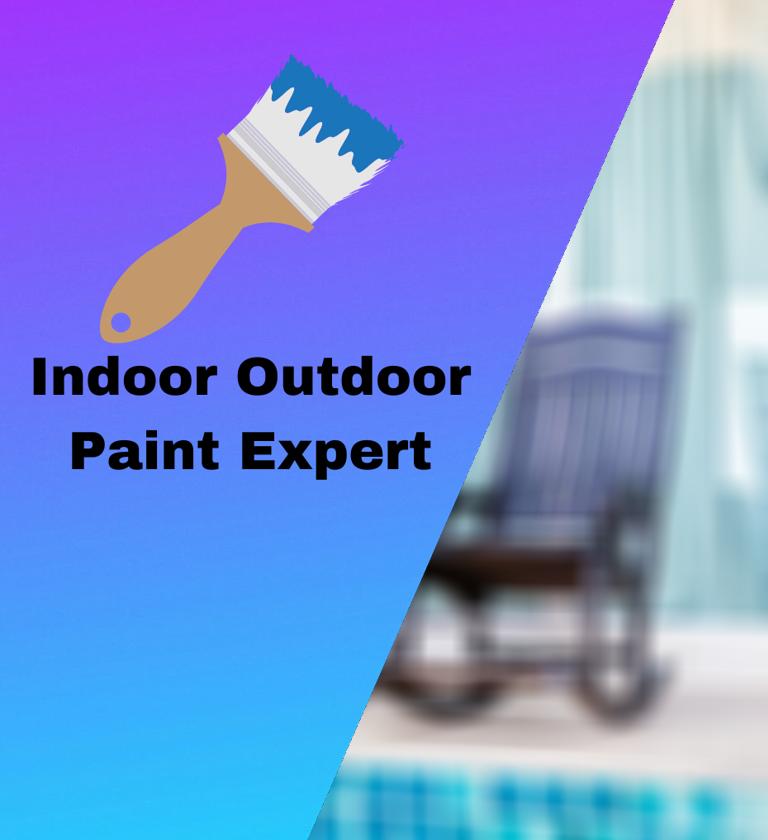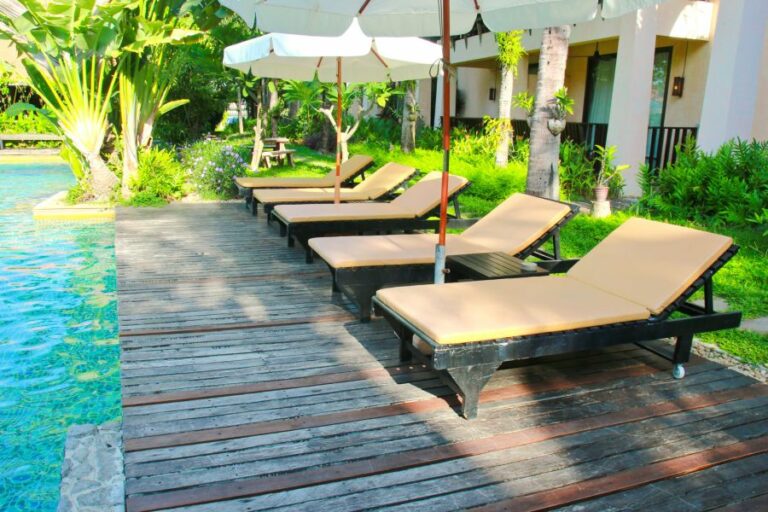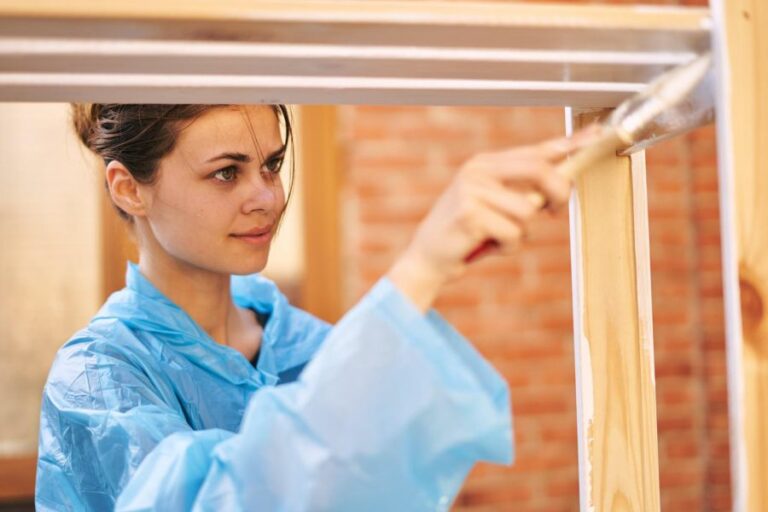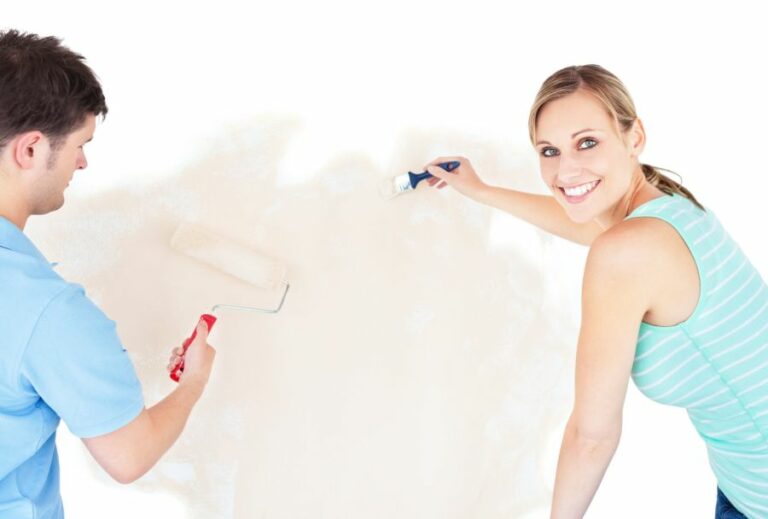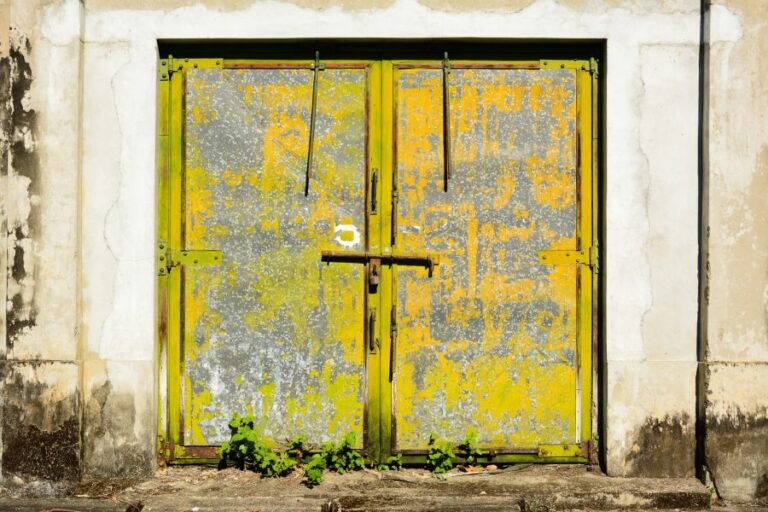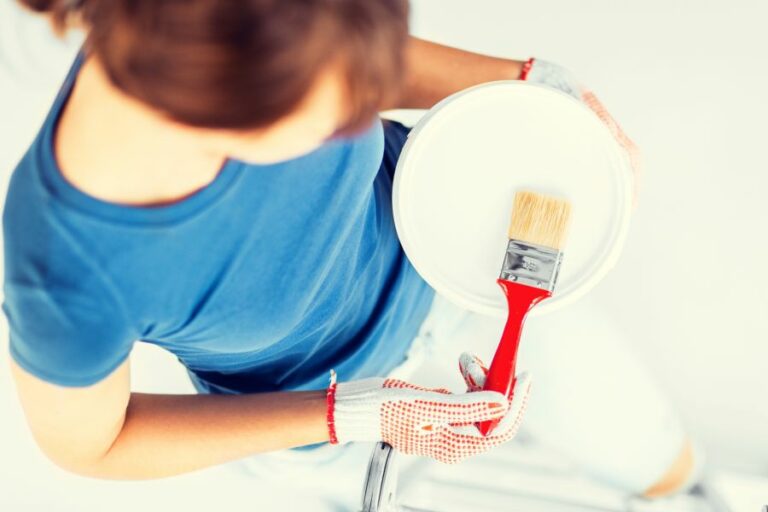What Is The Best Outdoor Paint, 25 Things You Should Know
Are you looking to give your outdoor space a fresh new look? The key to any successful painting project lies in choosing the right paint. With so many options available, it can be difficult to determine which type of outdoor paint will live up to your expectations. We’re here to help! We’ve researched and gathered information on the best outdoor paint available, ensuring you choose the perfect paint for optimal durability and style.
What is the best outdoor paint:
The best outdoor paint depends on surface type, climate, existing paint, and environmental impact. Acrylic latex paint is versatile and suitable for wood, brick, stucco, and concrete surfaces. Elastomeric paint is designed for masonry surfaces, while direct-to-metal (DTM) acrylic paint works well on metal surfaces. Vinyl exterior paint is ideal for vinyl siding. Consider factors like durability, resistance, and color retention when choosing the right paint.

Discover the top outdoor paint choices to protect and beautify your home, fence, or furniture. We’ve researched and compared various options, weighing factors like durability, ease of application, and affordability. Read on to find the ultimate paint solution to suit your needs and style!
Contents
- 1 Determining the Optimal Exterior Paint for Your Project
- 2 What is the Most Durable and Long-lasting Exterior Paint Available?
- 3 Which Type of Paint is Most Suitable for Exterior Surfaces?
- 4 What is the Most Suitable Exterior Paint for Withstanding Extreme Weather Conditions?
- 5 What is the most durable outdoor paint that resists fading?
Determining the Optimal Exterior Paint for Your Project
• Why Choosing the Right Outdoor Paint Matters
Just like indoor paint, outdoor paint plays a crucial role in elevating the aesthetics and durability of a building. It serves as the first line of defense against the ravages of weather and other external factors.
A well-selected paint can significantly enhance the life and appearance of your building, ensuring that it stays visually appealing even years after its application. Moreover, choosing the right outdoor paint can save you money in maintenance and repainting costs.
• Factors to Consider When Selecting Outdoor Paint
Before diving into the specific types of outdoor paint and their best uses, there are several factors to consider when selecting the right paint:
- Type of Surface: Determine whether the surface to be painted is wooden, masonry, metal, or plastic. Selecting the appropriate paint for each surface type is essential to the longevity and effectiveness of the paint job.
- Climate: Different paints are better suited for specific climatic conditions. Temperature, humidity, and exposure to ultraviolet rays can all impact the performance of outdoor paint.
- Existing Paint: If the surface to be painted has previously been coated, it’s vital to check the compatibility of the new paint with the existing one to avoid unpleasant surprises later on.
- Color Retention: Some outdoor paints retain their color better than others. Consider the importance of color integrity in your decision-making process.
- Environmental Impact: Several outdoor paint options meet environmental standards and may even provide energy-saving benefits. Keep the ecological impact of your paint choice in mind during the selection process.
• Comparing Exterior Paints: Oil-Based vs. Latex
When it comes to outdoor paint, the two primary categories are oil-based (also known as alkyd) and latex (or water-based) paints. Here is a comparison of their advantages and disadvantages:
– Oil-Based Paints
Advantages
- Adheres well to surfaces, ensuring long-lasting durability
- Resists wear and tear effectively
- High resistance to water and mildew
Disadvantages
- Lengthy drying time
- Susceptible to fading and yellowing over time
- Strong odors and potentially harmful chemicals
- Cumbersome cleanup process, involving specialized solvents
– Latex Paints
Advantages
- Quick drying time
- Highly resistant to fading and yellowing
- Low odor levels and environmentally-friendly formulation
- Easy cleanup with soap and water
- Flexibility accommodates surface expansion and contraction
Disadvantages
- Not ideal for certain surfaces, such as metal or wooden surfaces that are prone to bleeding and already coated with an oil-based paint
• Specific Outdoor Paint Types and Recommendations
Based on surface type, climate, and other factors mentioned earlier, here are recommended outdoor paint options:
1. Acrylic Latex Paint
Ideal for a wide range of surfaces, particularly wood, brick, stucco, and concrete, acrylic latex paints are known for their durable, flexible finish and overall excellent performance. They also resist mold and mildew, making them an appropriate option for areas with high humidity.
Leading paint brands like Sherwin-Williams and Benjamin Moore offer a wide range of acrylic latex paints for various applications.
2. Elastomeric Paint
Designed for masonry surfaces, elastomeric paint forms a thick, flexible, and water-resistant coating, making it especially valuable for surfaces that experience significant moisture or temperature fluctuations.
One popular elastomeric paint is Valspar’s Duramax Elastomeric Exterior Masonry and Stucco Paint.
3. Direct-to-Metal (DTM) Acrylic Paint
A reliable choice for metal surfaces, direct-to-metal (DTM) acrylic paints are designed to bond directly with metal without the need for a primer. They stand up well to wear and tear and provide excellent protection against rust and corrosion. Corotech’s DTM Acrylic Paint is a widely recommended option.
4. Vinyl Exterior Paint
Suitable for vinyl siding, this paint adheres exceptionally well to vinyl surfaces and offers unique resistance to fading and discoloration. Benjamin Moore’s Regal Select Revive Exterior Paint for Vinyl Siding is one such noteworthy option.
In conclusion, selecting the best outdoor paint involves understanding the specific requirements, such as the surface type, environmental factors, and existing paint compatibility.
A well-selected outdoor paint can enhance the appearance and durability of your property and save you from costly maintenance or repainting.
Brand | Type | Durability | Weather Resistance |
|---|---|---|---|
Behr Premium Plus Exterior | Acrylic | High | Good |
Benjamin Moore Aura Exterior | Acrylic | High | Excellent |
Sherwin-Williams Duration Exterior | Acrylic | High | Excellent |
Rust-Oleum Zinsser Perma-White | Latex | Medium | Excellent |
KILZ Exterior Siding, Fence, and Barn Paint | Water-based/latex | High | Excellent |
What is the Most Durable and Long-lasting Exterior Paint Available?
Keeping the exterior of our homes and buildings looking fresh and well-maintained is not just aesthetically pleasing but also essential for protecting the structure from various elements that can cause damage.
One of the critical components in ensuring this protection is choosing the longest-lasting exterior paint that best suits our needs.
• Factors That Affect the Durability of Exterior Paint
There are several factors to consider when looking for the longest-lasting exterior paint. Understanding these factors can help you make the right choice based on your specific needs and preferences.
– Quality of the Paint
High-quality paints tend to last longer than their lower-priced counterparts. This is because top-quality paints have a better composition of ingredients, with more solids and binders that contribute to a thicker, more durable coat.
– Type of Paint
Exterior paints come in various types, including water-based (latex) and oil-based (alkyd) formulas. Latex paint generally has lower levels of volatile organic compounds (VOCs) and is easier to clean up, while oil-based paint offers superior adhesion and a more durable finish.
In recent years, advancements in water-based paint technology have narrowed the gap between latex and oil-based paint durability.
– Surface Preparation
Proper surface preparation is crucial in ensuring the longevity of the exterior paint. Inadequate surface preparation can lead to peeling, cracking, and other paint failures that require premature repainting.
– Environmental Conditions
Climate plays a significant role in the longevity of the exterior paint. For instance, paint applied in regions with high humidity, intense sunlight, or frequent precipitation may not last as long as paint used in more temperate climates.
Choosing a paint that is specifically formulated for the weather conditions in your area can improve durability.
• Top-Performing Exterior Paints
When it comes to the longest-lasting exterior paint, several brands and products have received high marks from professional painters, consumer reports, and independent testing agencies. Below are some of the top-performing exterior paints available in the market today.
– Sherwin-Williams Duration
Sherwin-Williams Duration is a highly durable, 100% acrylic latex paint that offers excellent coverage, adhesion, and resistance to mold and mildew. This paint is also known for its self-priming capabilities, which help save time and money on surface preparation.
– Benjamin Moore Aura Exterior Paint
Benjamin Moore Aura Exterior Paint is another high-performing, 100% acrylic latex paint formulated with the brand’s proprietary Color Lock technology. This technology enhances color retention and resistance to fading while providing outstanding durability and mildew resistance.
– PPG Timeless Exterior Paint
PPG Timeless Exterior Paint is a premium acrylic latex paint fortified with UV-protective additives and advanced adhesion technology. This formulation ensures long-lasting color retention, resistance to chalking, and protection against decades of wear and tear from the elements.
According to an independent study by M-Home Magazine, these three exterior paints outperformed other brands, making them excellent choices for those seeking the longest-lasting paint.
• Tips for Achieving the Best Results When Painting Your Property
To ensure your exterior paint lasts as long as possible, consider the following tips:
- Properly prepare the surface by removing any loose, peeling, or blistering paint, sanding, and cleaning any dirt or mildew. Primer may also be necessary to ensure proper adhesion.
- Always follow the manufacturer’s guidelines on application methods and temperature recommendations.
- Apply an adequate number of coats. One thick coat is not as effective as two thin coats, as it can lead to cracking and peeling over time.
- Pay attention to the weather forecast. Try to avoid painting in excessively hot or humid conditions or when rain is expected within 24 hours.
- Keep up with regular maintenance, such as cleaning your home’s exterior and inspecting for any signs of paint damage, to address issues before they escalate.
In conclusion, the longest-lasting exterior paint depends on several factors, including paint quality, type, surface preparation, and environmental conditions.
Sherwin-Williams Duration, Benjamin Moore Aura Exterior Paint, and PPG Timeless Exterior Paint are among the top-performing products that offer the best combination of durability, adhesion, and resistance to the elements.
Proper application techniques and ongoing maintenance are also crucial to ensuring the longevity of your exterior paint job. By considering these factors, you can choose the best exterior paint for your property and enjoy the lasting beauty and protection it provides.
Which Type of Paint is Most Suitable for Exterior Surfaces?
As a painting professional with years of experience, I understand the importance of choosing the right paint for exterior surfaces. The wrong paint can result in weathered, dirty, or even peeling surfaces in just a short amount of time.
• Types of Exterior Paints and When to Use Them
There are essentially two types of exterior paints: water-based (latex) and oil-based (alkyd). Both options have their pros and cons.
– Water-based (Latex) Paints
Latex paints are more environmentally friendly and clean up easily with soap and water. They are resistant to cracking, have low odor, and are more elastic, which allows them to expand and contract with the surface, preventing cracks and peeling.
Moreover, they are fast-drying and can be applied in a wide range of temperatures.
When to Choose Latex Paints
I recommend using latex paints in the following circumstances:
- Wood siding and trim
- Aluminum siding
- Stucco
- Brick surfaces
- Concrete surfaces
– Oil-based (Alkyd) Paints
Alkyd paints are highly durable and resistant to wear, making them ideal for high-traffic areas or surfaces subject to frequent handling. They have excellent adhesion and are less likely to peel or chip than latex paints.
When to Choose Alkyd Paints
I recommend using alkyd paints in the following circumstances:
- Surfaces previously painted with oil-based paint
- Utilitarian surfaces (such as machinery, pipes, or equipment)
- Metal doors and railings
Oil-based paints should not be used on surfaces prone to expansion and contraction, as they are less flexible than latex paints.
• Selecting the Right Finish for Your Exterior Paint
The finish of the paint plays a crucial role in the longevity and appearance of the painted surface. There are three common finishes in exterior paints:
– Flat (Matte)
A flat finish is excellent for hiding imperfections and has a smooth, uniform look. However, it is not highly resistant to moisture and stains compared to other finishes. I recommend using a flat finish on large exterior surfaces, such as:
- Stucco walls
- Brick walls
- Wood siding
– Satin (Low Gloss)
Satin finish has a slight sheen that makes it more moisture and stain resistant than flat finishes. It is an excellent choice for surfaces that need a bit of durability and some sheen without appearing shiny. I recommend using a satin finish on surfaces such as:
- Window trim
- Door frames
- Shutters
- Patio furniture
– Gloss (High Gloss)
The gloss finish is highly durable and easy to clean, making it perfect for surfaces that are frequently handled or exposed to the elements. It has a shiny, reflective appearance that highlights the texture of the surface. I recommend using a gloss finish on the following:
- Doors
- Railings
- Metal surfaces
• Factors to Consider When Choosing Exterior Paint
– Weather Conditions
Different paint types perform better in specific climates. For instance, some latex paints are formulated to resist extreme temperature fluctuations and moisture, which is ideal for climates with significant temperature variations.
For coastal environments, consider using paint with added mildewcides and UV protectants to combat humidity and sun damage.
– Surface Preparation
Proper surface preparation is essential to ensure a long-lasting paint job. Surface preparation may include:
- Cleaning
- Sanding
- Caulking
- Priming
Check the paint manufacturer’s instructions for the specific surface preparation requirements for your chosen paint.
– Warranty
High-quality exterior paints often come with a warranty, which can range from 5 to 25 years. A longer warranty may indicate better performance but always read the full terms and conditions to understand what is covered.
In conclusion, choosing the best paint for exterior surfaces involves understanding the types of paints available, the appropriate finish for various surfaces, and considering factors such as weather conditions and surface preparation.
As a painting professional, I recommend thoroughly researching your options and consulting with a paint retailer to ensure you have the right product for your specific needs.
Type of Paint | Pros | Cons |
|---|---|---|
Acrylic Latex Paint | Water-based, quick-drying, expandable, good adhesion, easy to clean, resistant to UV damage | May not adhere well to chalky surfaces, can be damaged by freeze-thaw cycles |
Oil-Based Paint | Durable, good adhesion, long-lasting, flexible | Long drying time, strong odor, difficult to clean, susceptible to UV damage |
Elastomeric Paint | Excellent adhesion, incredibly durable, long-lasting, superior water resistance, can cover cracks | More expensive, harder to apply, may trap moisture if applied incorrectly |
What is the Most Suitable Exterior Paint for Withstanding Extreme Weather Conditions?
Exterior paint is much more than just a decorative element. It serves as a protective covering for your home or building, shielding it from harsh weather conditions and the harmful effects of UV rays, moisture, and other environmental elements.
In regions where extreme weather conditions are common, choosing the right paint becomes even more critical.
• The Importance of Weather-Resistant Paint
The exterior paint that you apply on your walls should not only look good, but should also protect your home or building from extreme temperatures, heavy rain, snow, and other environmental factors.
A weather-resistant exterior paint can help you save money on energy bills by providing better insulation, reducing fading and peeling due to UV exposure, and minimizing the growth of mold and mildew.
One of the key features to look for in weather-resistant paint is its ability to expand and contract with temperature fluctuations. This prevents cracking and peeling in extreme temperatures, ensuring that your paint job stays intact for a longer period of time.
• Top Weather-Resistant Paint Options
1. Acrylic Paint
Acrylic paints, also known as 100% acrylic latex paints, are one of the most popular and widely recommended exterior paint choices for homes and buildings located in extreme weather conditions.
They offer superior durability, excellent adhesion to a variety of surfaces, and great resistance to chalking, cracking, and peeling.
Acrylic paints are also known for their high UV resistance, making them an ideal choice for regions with prolonged sun exposure. Additionally, they are resistant to moisture and mildew, ensuring long-lasting protection for your home or building.
I recommend the use of high-quality acrylic paints, such as those offered by brands like Benjamin Moore, Sherwin-Williams, and Behr.
2. Elastomeric Paint
Elastomeric paint is a high-performance coating that provides excellent protection against extreme weather conditions. Its most notable feature is its remarkable elasticity, which allows it to expand and contract with your home’s exterior walls as they move due to temperature changes.
This attribute prevents the formation of cracks and other damages that might occur with lesser-quality paints.
Elastomeric paints are highly water-resistant, which makes them an excellent choice for areas with heavy rainfall or snowfall. They are also resistant to wind-driven rain, salt spray, and the harmful effects of UV radiation.
Some reputable elastomeric paint brands to consider include Valspar, PPG, and Kelly-Moore.
3. Modified Acrylic Paint
Modified acrylic paints combine the best of both worlds: the durability, adhesion, and water resistance of acrylic paint with the elasticity and weatherproofing capabilities of elastomeric paint.
These paints can accommodate larger cracks and offer better flexibility, making them a suitable choice for homes and buildings located in regions with extreme temperature variations.
It is worth noting that not all modified acrylic paints offer the same level of performance, so it is essential to research and choose the right brand based on your specific requirements. Some reliable brands to look for include PPG, Sherwin-Williams, and Benjamin Moore.
• Preparation and Maintenance Tips for Weather-Resistant Paints
The durability and effectiveness of weather-resistant paint depend on proper preparation, application, and maintenance. Here are some tips for ensuring the long-lasting performance of your exterior paint in extreme weather conditions:
- Surface preparation: Before applying any paint, make sure your surface is clean, dry, and free of peeling paint, mildew, or other contaminants. You may need to power wash or scrub the surface with a mildew-resistant cleaner and a wire brush to ensure proper adhesion.
- Primer: Applying a high-quality primer before painting can improve the paint’s adhesion, durability, and overall performance. It is especially important to prime surfaces in which the previous paint has been removed or is severely damaged.
- Caulking: Properly sealing cracks, gaps, and joints in your home’s exterior is essential to prevent moisture penetration and enhance the durability of your paint job. Use a high-quality, weather-resistant caulking material for best results.
- Multiple coats: Applying more than one coat of paint will not only ensure better coverage but also enhance the durability and weather resistance of your paint job.
- Maintenance: Regularly inspect and clean your home’s exterior to remove dirt, mildew, and other elements that may prematurely age your paint.
To learn more about the importance of proper preparation, application, and maintenance for weather-resistant paints, visit the U.S. Department of Energy’s guide on weatherizing your home.
In conclusion, the best exterior paint for extreme weather conditions should offer excellent durability, adhesion, and resistance to environmental elements.
Acrylic, elastomeric, and modified acrylic paints are top choices for homes and buildings located in areas with harsh temperatures, heavy rainfall, or prolonged sun exposure. Proper preparation, application, and maintenance are key factors in ensuring the lasting performance and protection of your exterior paint.
What is the most durable outdoor paint that resists fading?
When it comes to choosing the ideal outdoor paint for your home, one of the main factors to consider is how long the paint will last before starting to fade.
Fading is a natural occurrence over time, especially when exposed to harsh weather conditions, but some paint types can better withstand the effects of the sun, wind, and other factors.
• Types of Outdoor Paints and Their Characteristics
– Acrylic Latex Paint
Many experts recommend acrylic latex paint as the top choice for exterior use since it has excellent adhesion, durability, and resistance to fading. Acrylic latex paint is a water-based paint made from acrylic resins combined with latex binders.
The use of acrylic materials offers a variety of advantages when it comes to resisting fading:
- It forms a flexible, breathable film that expands and contracts with temperature fluctuations, reducing the likelihood of cracking or peeling.
- Acrylic resins have excellent color retention properties, which means the paint’s vibrancy will last longer.
- Acrylic latex paint dries quickly and adheres well to most surfaces, including wood, brick, concrete, and metal.
– Elastomeric Paint
Elastomeric paint is an ideal choice for large surfaces and areas prone to expansion and contraction due to temperature changes.
This type of paint forms a thick, elastic coating, which helps protect your home’s exterior from water damage and prevents cracks from appearing. As a result, elastomeric paint is very effective in resisting fading:
- The thick, flexible coating offers added UV protection, keeping the paint’s color vibrant for longer.
- The water-resistant nature of elastomeric paint helps prevent mildew growth, which can lead to premature fading.
However, it is crucial to note that elastomeric paint may not be the best option for every surface or project, as it is heavier and more challenging to apply.
– Solvent-Based Paint
A solvent-based paint, also known as oil-based paint, offers excellent adhesion and durability but is less resistant to fading when exposed to sunlight over time.
Unlike acrylic latex paint, solvent-based paint contains alkyd resins, which can become brittle and lose their color retention capabilities under UV exposure. It is also important to mention that solvent-based paints may not be environmentally friendly, and their use is limited in some areas due to regulations.
• Tips for Picking the Best Fade-Resistant Outdoor Paint
– Look for High-Quality, 100% Acrylic Paint
As previously mentioned, acrylic latex paint offers excellent resistance to fading. When selecting paint, look for high-quality options that contain 100% acrylic resin to ensure maximum durability and fade resistance.
– Choose a Light-Reflective or Fade-Resistant Formula
Some exterior paints are specifically designed to combat fading by incorporating light-reflective or fade-resistant ingredients. These formulas tend to last longer and maintain their vibrant colors, even when exposed to harsh weather conditions.
– Opt for a Higher Gloss Sheen
Exterior paints are available in various sheen levels, ranging from flat to high-gloss. Glossy paints tend to be more resistant to fading than their flat counterparts, as they better reflect sunlight and are less prone to dirt accumulation.
• Properly Applying Fade-Resistant Outdoor Paint
Regardless of which type of fade-resistant paint you choose, proper surface preparation and application techniques are key to ensuring its longevity. Taking the time to prepare and paint your home’s exterior will significantly reduce the chances of fading and other issues like peeling or cracking.
– Surface Preparation
- Inspect your home’s exterior, repairing any cracks, holes, or damaged areas before painting.
- Clean the surface thoroughly, ensuring it is free of dirt, mildew, and peeling paint. Pressure washing can be an effective method for cleaning large areas.
- Let the surface dry completely before painting to ensure proper adhesion.
– Proper Application Techniques
- Invest in high-quality brushes and rollers, which can help produce a smoother, more even finish.
- When using acrylic latex paint, be sure to follow the manufacturer’s recommendations regarding the use of a primer.
- Apply multiple thin coats of paint rather than one thick coat for better adhesion, durability, and overall appearance.
In conclusion, acrylic latex paint is generally considered the best outdoor paint that resists fading. However, elastomeric paint can be an excellent choice for large surfaces and challenging conditions.
When selecting paint for your exterior project, look for high-quality, fade-resistant formulas, and employ proper surface preparation and application techniques to ensure long-lasting, vibrant results.
Brand | Product Name | Key Features |
|---|---|---|
Behr | Behr Marquee Exterior Paint & Primer | Weather-resistant, UV protection, one-coat coverage |
Benjamin Moore | Aura Exterior Paint | Color Lock technology, fade-resistant, low temperature application |
Sherwin-Williams | Resilience Exterior Acrylic Latex Paint | Mildew resistant, excellent adhesion, moisture protection |
PPG | PPG Timeless Exterior Paint & Primer | UV protection, weathering resistance, one-coat coverage |
Valspar | Valspar Duramax Exterior Paint | Flexible finish, UV protection, fade resistant |

